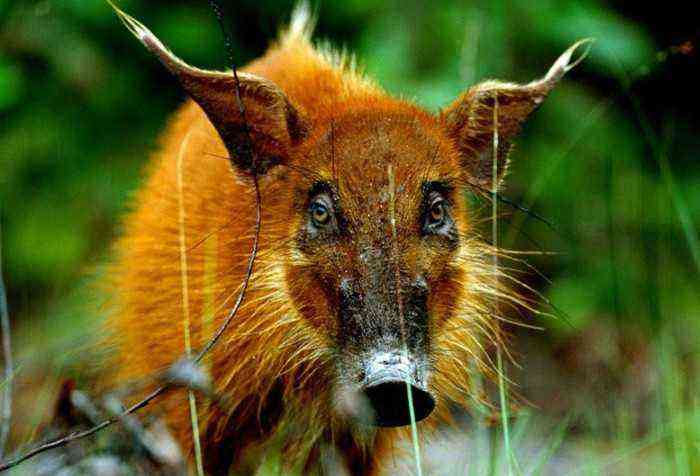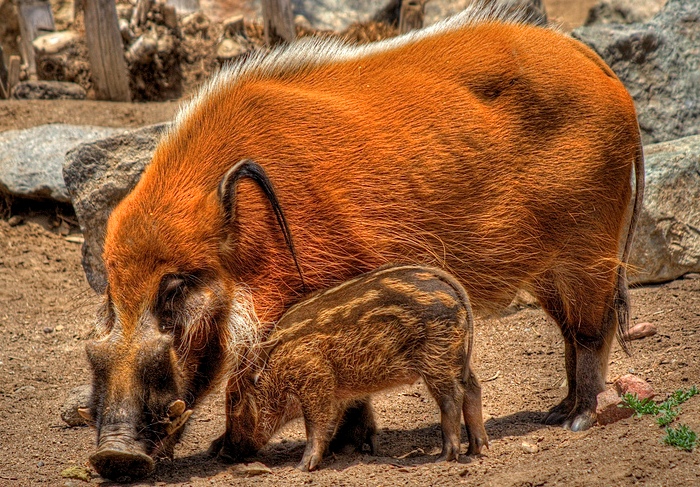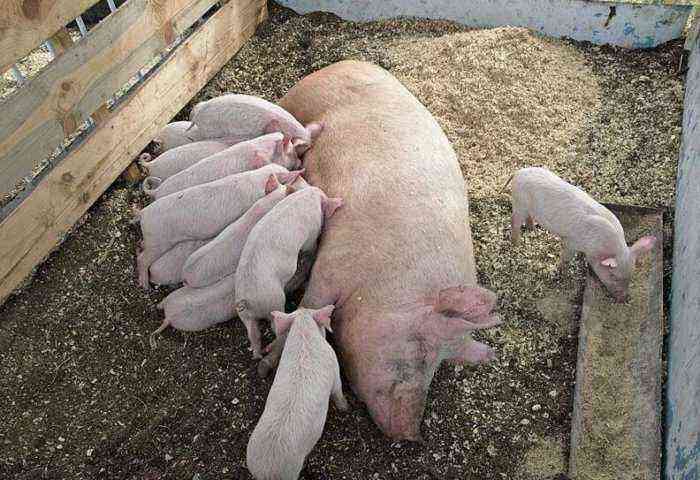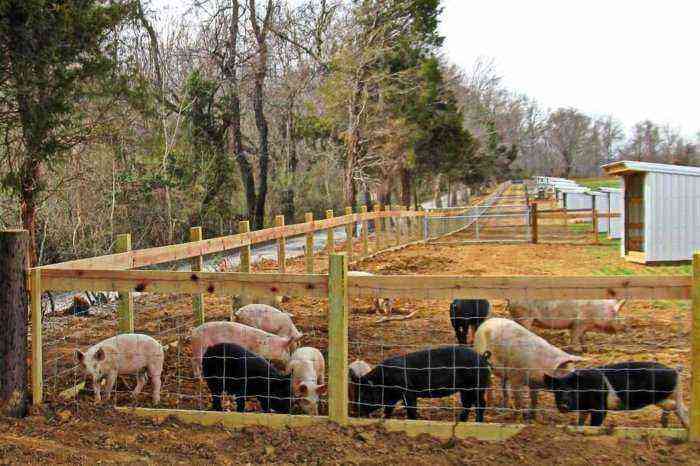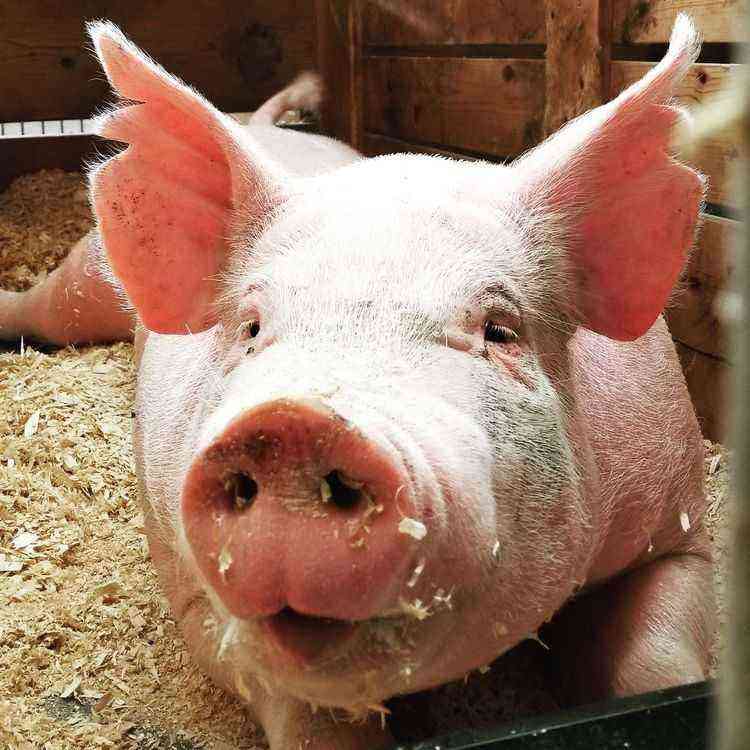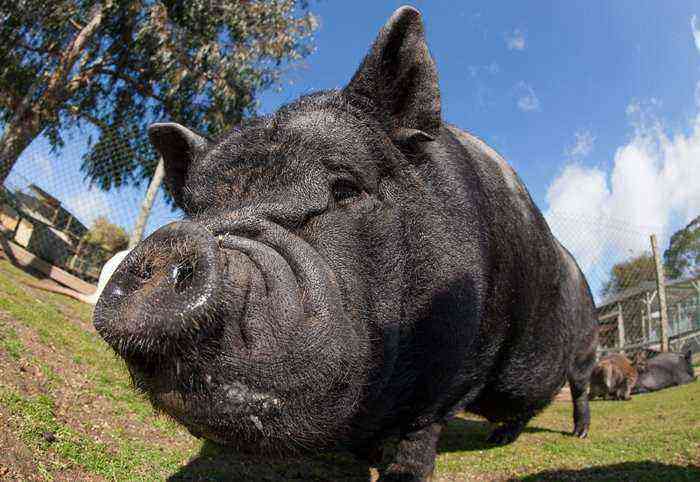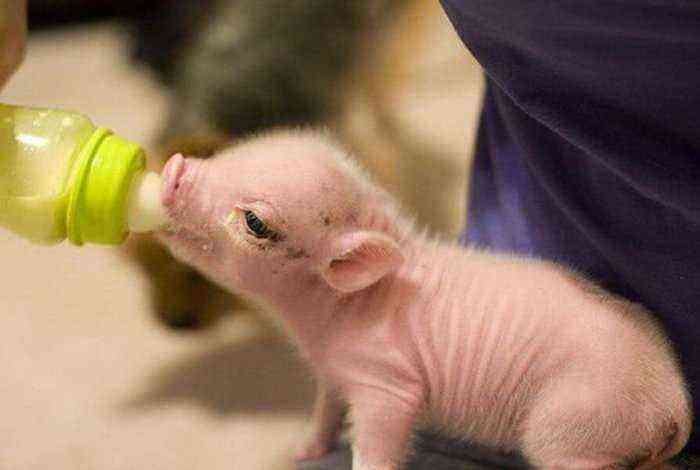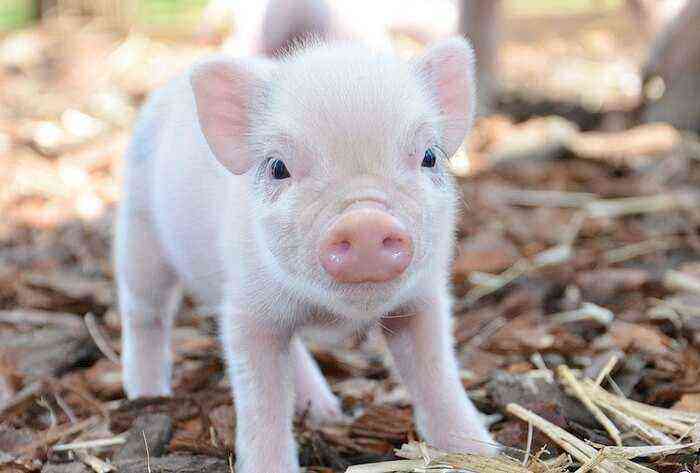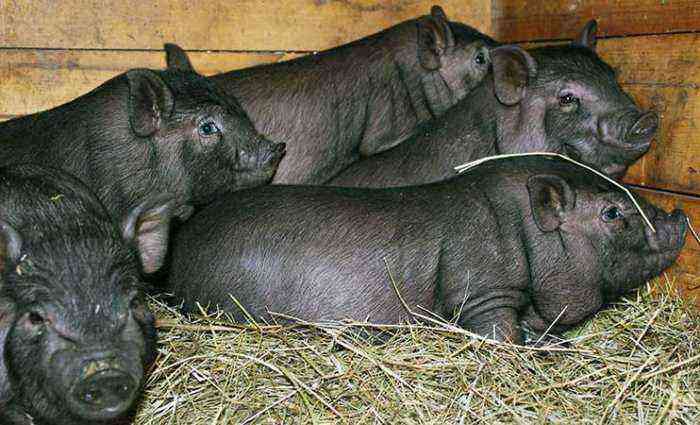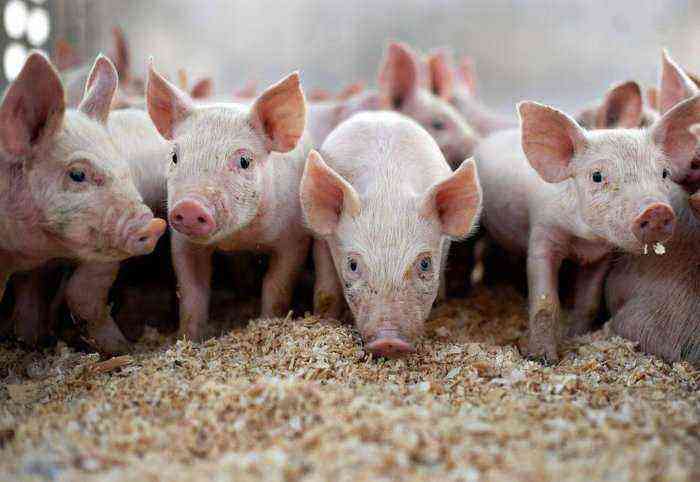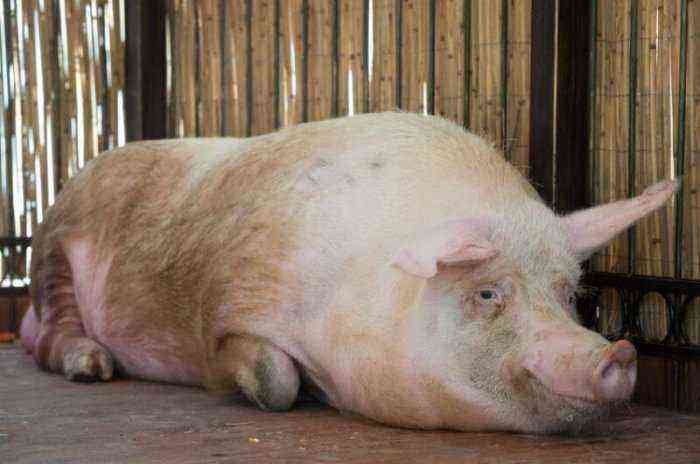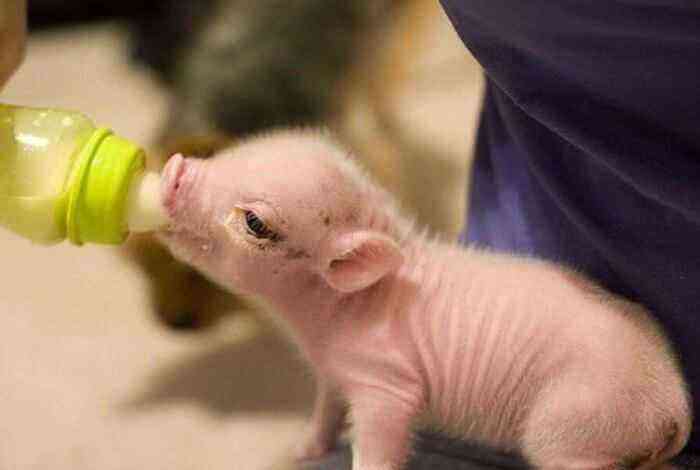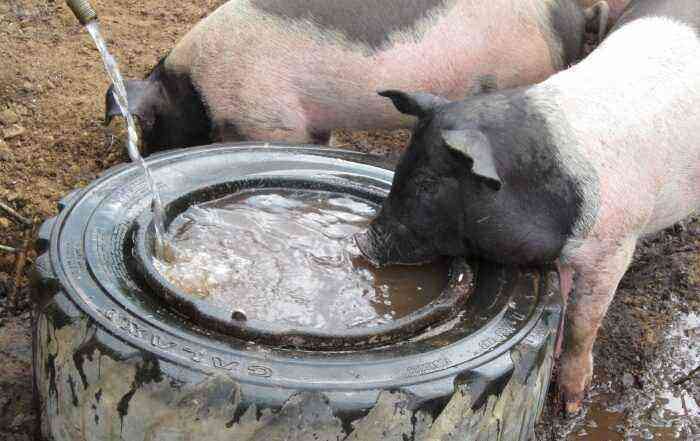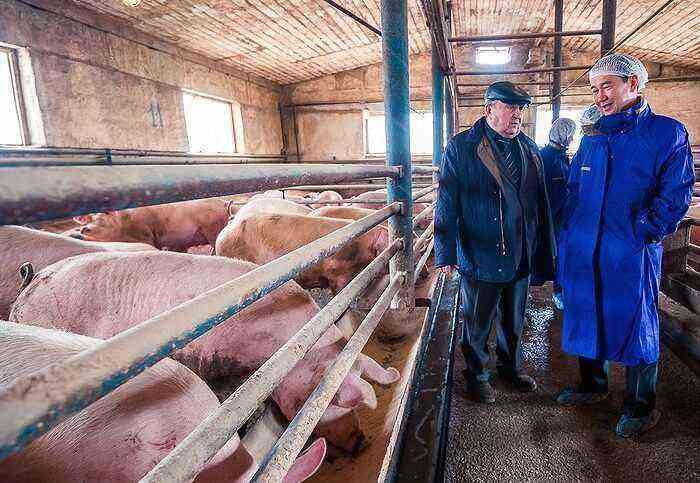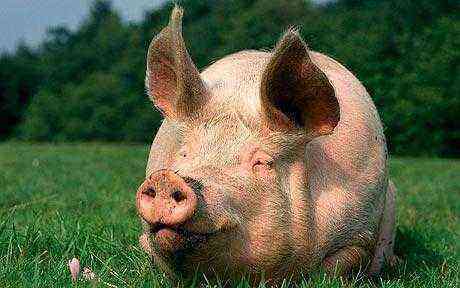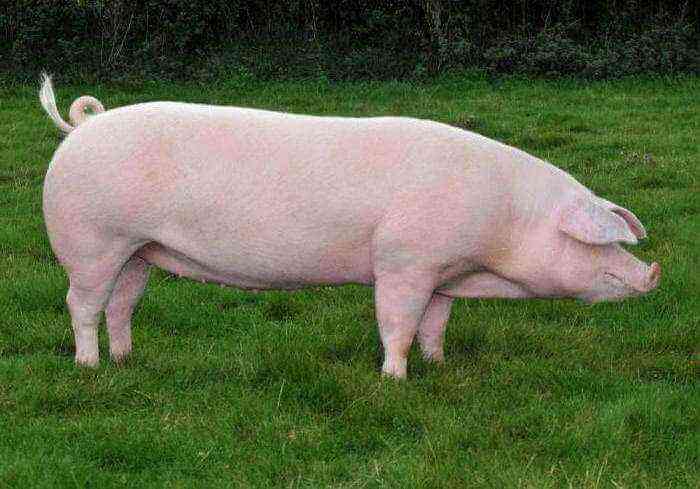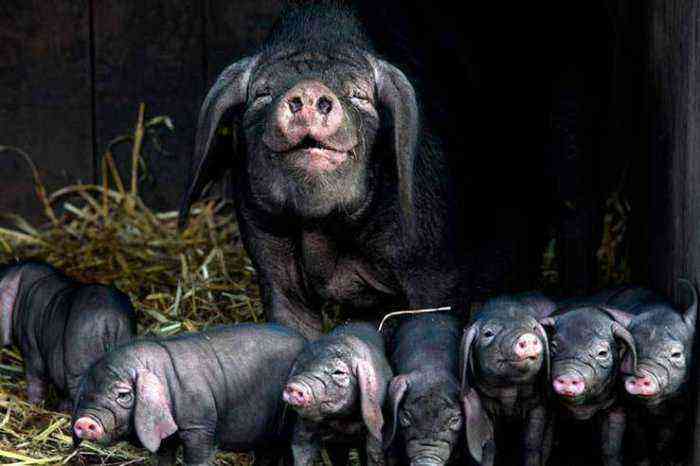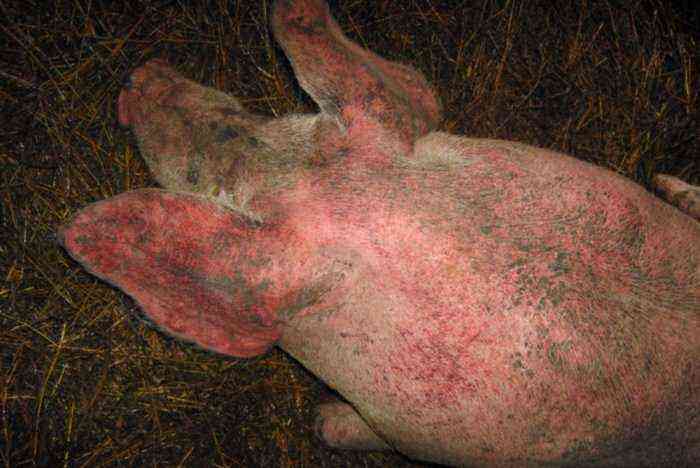An unusual member of the pig family is the bush pig. This animal differs from other members of the family in its appearance. She has very interesting ears, a bright color and long hair on the sides of her muzzle.
Bush pigs
Bush-eared pigs have another unusual name – river pigs. They got this unusual name because of their special love for water. They often live near water bodies, and they can also be found both in tropical forests and in savannahs.
Characterization
Pigs of this breed live in central Africa or in its western part. They live in a group that is always led by a male. Often the group consists of: a male, several females and cubs.
Despite their attractive appearance, the animals are quite aggressive. They often attack livestock, dogs and cats. If an African bush pig meets with a domestic animal, it does not survive long, the pig tears it apart with its fangs and eats it. That is why these pigs are rarely kept as livestock. But some farmers in Africa managed to tame them, and direct their aggressive energy into a peaceful direction.
But for the most part, these pigs are parasites, as they raid corn and cereal fields, devastating them. The main enemies of bush pigs are hyenas or representatives of the cat family. And since the number of leopards has significantly decreased over the past decades, it has become more difficult to control the population with the help of natural selection. People tried to catch pigs with poisoned baits, but this type of pig has an excellent sense of smell, so all attempts failed.
Origin
These pigs are one of the most prominent representatives of the oldest mammals in Africa. Their ancestor is the hippopotamus. Previously, scientists did not separate the Madagascar and African breed and attributed it to the same species category, since outwardly the pigs are very similar and have the same habits. But modern breeders separate both of these species, and here’s why:
1. The Madagascar species has a different name – shrubby. They prefer to settle in dense thickets or low shrubs. Pigs of this breed live in Africa and are the only representatives of ungulates on the island of Madagascar. Unlike African pigs, they have lighter reddish bristles and a thick light mane. They are omnivorous, feeding on both carrion and small invertebrates, as well as various fruits and roots.
Madagascar view
2. The African species is also called the river species, because of the predilection of these animals for living near water bodies. This species is widely distributed in western Africa. And unlike Madagascar, they prefer not dense thickets, but areas near water bodies and swamps, rare tropical forests or savannahs.
Since the color of these pigs is quite diverse, it was customary to group them into several subspecies according to external signs. At the moment, breeders do not distinguish between African bush pigs on this basis.
Distribution
The brush-eared African river pig lives near the reservoirs of Central and West Africa. They try to avoid too dry places and settle near swamps, they can often be found in savannahs or forests. The most habitual habitat are areas near the Kasai and Congo rivers. However, they can change their habitual habitats to others due to changing climatic conditions.
Appearance
The appearance of the bush pig is quite attractive. Her bright appearance and unusual body structure instantly attract the eye:
- The entire body of the pig is covered with bright red hair, and a white stripe stands out on the back. White coat is longer than red, but rare. It also covers the belly of the pig, is located near the snout, and is rarely located around the eyes.
- The muzzle of the pig is black, as are the tassels. It is thanks to the unusual ears with tassels that the animal got its unique species name.
- There is also a brush at the end of the tail. The tail itself is black, of medium length.
- The color of the pig’s legs is also interesting: from below they are gray, and closer to the body they are red (in the tone of the main color).
- The muzzle is elongated, with a small neat heel.
- Males have long bone burrs that can be confused with horns.
Pigs of this breed are very mobile and fast thanks to a well-developed hock. Although the animal is not very hardy, a rare individual has a saggy belly or obesity. All pigs of this breed have a neat, small and muscular body.
The African bush pig differs from others in its fangs: they are sharp and long. Thanks to this form of fangs, they can easily get food, both in the ground and hunt small animals.
Life
Pigs of this breed are nocturnal inhabitants. During the daytime, African river pigs sleep or hide in small earthen depressions camouflaged by vegetation.
The bush pig is not very prolific
They live in groups led by a male. Group size often reaches 20 individuals.
The brush-eared pig is not very prolific; for one farrowing, the sow brings from 1 to 6 cubs. And since the survival rate of piglets is weak, only 3-4 individuals reach sexual maturity.
Sows of this breed are very caring mothers, they arrange a high safe nest for their children. The lactation period lasts from 2 to 4 months, then mothers accustom piglets to coarser food.
Attention! Each group of pigs lives on its own territory, which they try to mark either with scratches from fangs on trees, or with the help of a secret. In the event of an attack by another group, the owners of the territory are saved by fleeing.
Bush-eared African river pigs are subject to all dangerous diseases of the boar family. Most of these diseases are detrimental to livestock. African swine fever is one such disease. An animal can become infected from a tick bite or from a sick individual. For many, this disease is fatal.
Repeated human attempts to tame this type of pig were in vain, only isolated cases of domestication are known. And those who succeeded, argue that the captured adult at first behaves aggressively and nervously, but soon gets used to the conditions of detention and calms down. And some individuals are so used to people that they are allowed to take care of their offspring. Captive-bred piglets are tame and do not show aggression towards humans.
